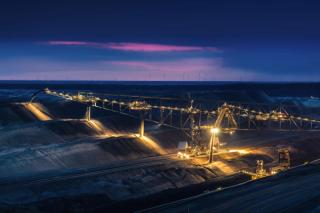
Cultural heritage: Indigenous and cultural heritage values driving sustainable development
by Flavia Kiperman
View post

Predicting the future is inherently difficult. Indeed, if it were easy we would all be millionaires by virtue of our foresight to pick winning investments every time! The challenge is made even more difficult in the face of a rapidly changing climate where we are departing from historical norms, amplifying the adage ‘past performance is not a guarantee of future results’. This is where climate scenario analysis comes in. Not only is it now considered best practice and an immensely valuable exercise to go through a climate scenario analysis and strategic planning exercise, it is increasingly prescribed by various climate disclosure frameworks (TCFD, ISSB, CSRD etc.).
At SLR, we have found this works best when ‘climate scenario narratives’ - stories we can all understand about how the future might unfold and how it will impact us - are co-developed with key stakeholders in the organisation. This works best when the stakeholders are from a range of functions that might not necessarily always come together (e.g. from finance, risk, sustainability, logistics, board). This means thinking about the future through the lens of typically three different futures:
1) a rapid decarbonisation pathway (often referred to as 1.5°C);
2) a disorderly transition where efforts are disjointed and left until the last possible moment; and
3) a high warming scenario (often referred to as RCP8.5 or 4°C+).
We have found interactive workshops (in person or online) that enable the participants to explore how the business environment could change under these different scenarios are particularly effective for developing a shared vision of the future. The purpose of this exercise is then to understand what actions to take now, to mitigate the main risks.
One way to identify the main risks is to quantify their financial impact, which is again a requirement of the main climate disclosure frameworks. This can be a challenging exercise as forward-looking price projections (e.g. for the price of raw materials or electricity) are not always available, and if they are, the data can be questionable.
This is why we are increasingly thinking about financial quantification in terms of ‘sensitivity analysis’. Rather than being overly fixated on imperfect data, this is a way to understand the stage gates at which a change in price becomes problematic. An example is when the price of a rare earth element vital for a particular product goes above (say) $100/per tonne, then that aspect of the business would no longer be viable. This is important information for the board to understand and factor into its strategic decision-making, so it can explore alternatives. We are finding that many of our clients are finding this approach useful as a second- or third-year exercise, after their initial financial quantification efforts.
The purpose of the exercise is not to arrive at an exact number, but rather to identify the trigger points for action that can increase resilience to climate change and avoid the business being wrong-footed. Indeed, combined with a good grasp of strategic scenario planning, this is exactly the type of decision-useful information that boards can use to help their organisation stay ahead as the climate changes. If this is an area where you need help, then please do get in touch.

by Flavia Kiperman

by Jasper Schrijvers , Matthew Hoare

by Clodagh Connolly, Nicola Inge, Andres Schottlaender